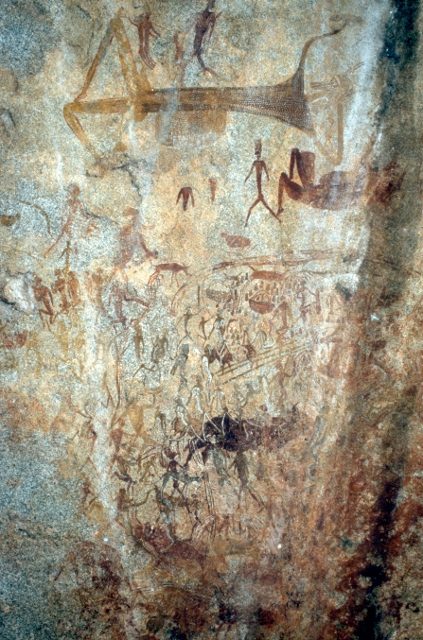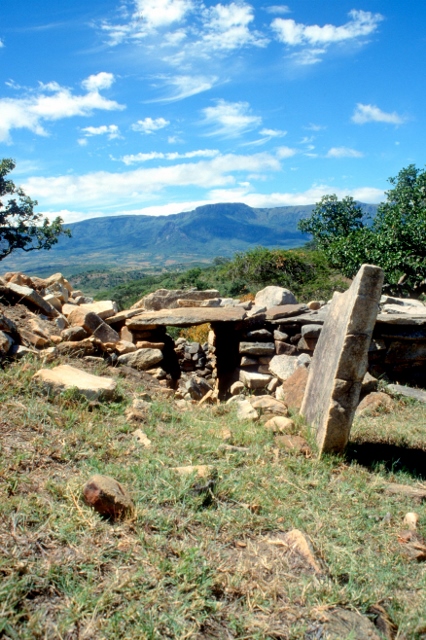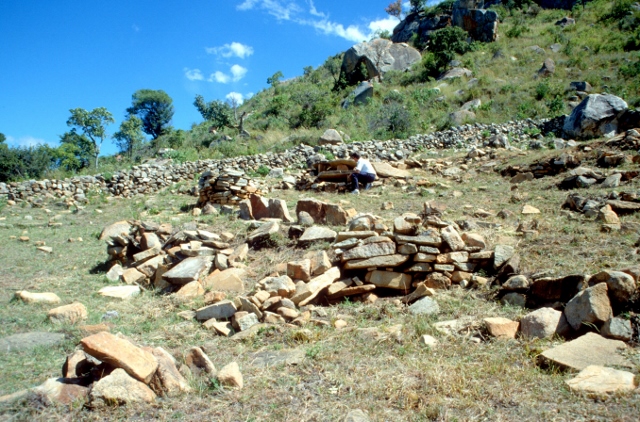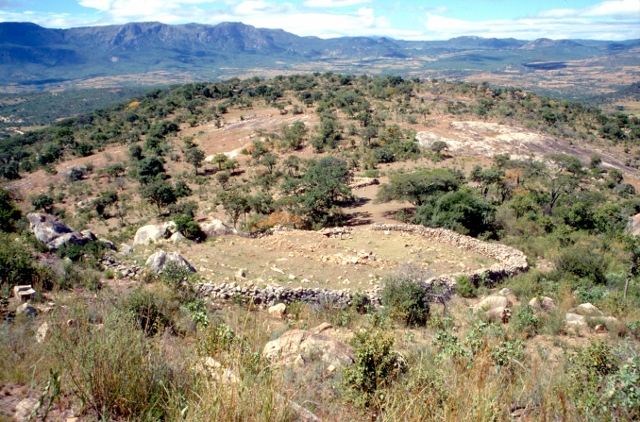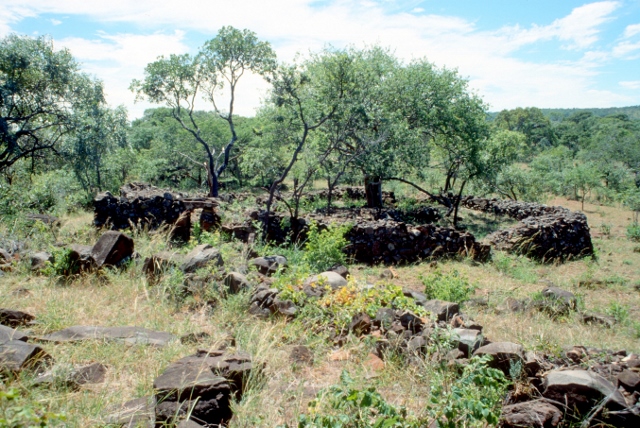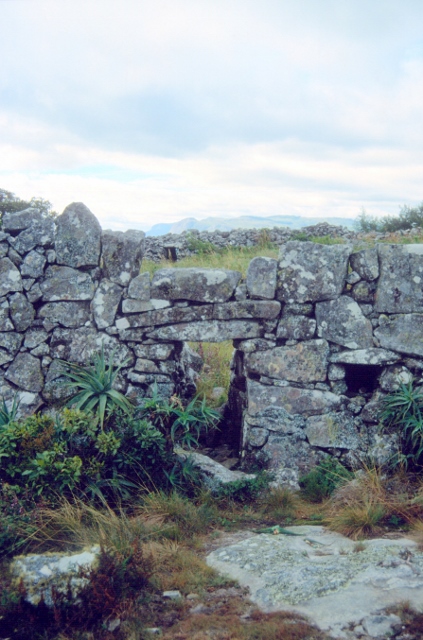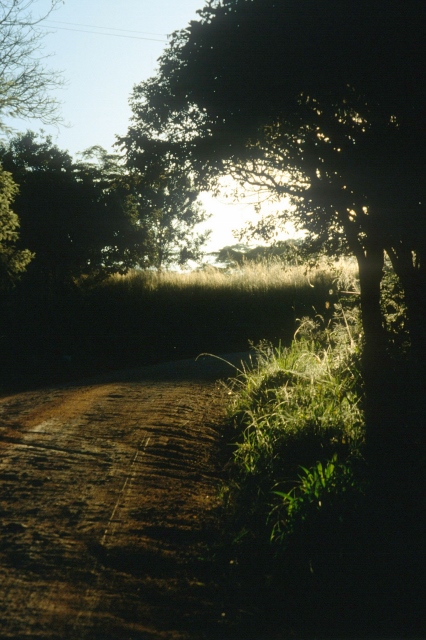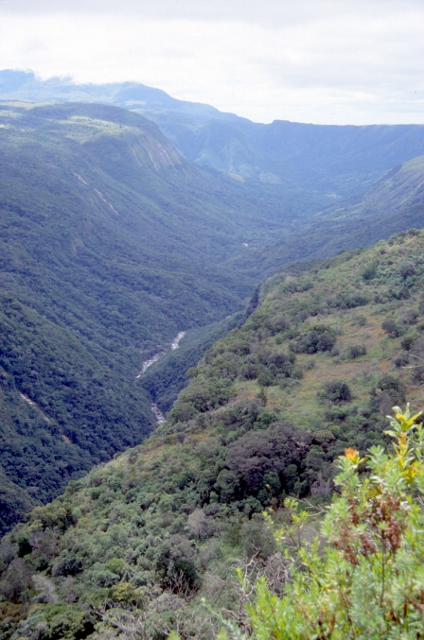April 9th – to the Eastern Highlands
The most spectacular scenery of Zimbabwe is to be found in the Eastern Highlands – which had to be inspected, of course, so I drove to the town of Nyanga, near the National Park of the same name.
On the way is Diana’s Vow, a farm on which land is located the most famous, most detailed, most colourful and most complex of Zimbabwe’s rock paintings. The paintings, or what is left of it, are not in a cave, but under an overhanging rock, and much of the work has been washed away by rain over the years. But the remaining panel, about 2×1 meter in size, is indeed quite extraordinary. The image of the man, comfortably lying down, one knee bent and holding his head with his hands, is the one iconic image used in books and flyers promoting local rock art. There is even a signpost to the paintings, 500 meters from the entrance of the farm!
more photos of the Diana’s Vow rock paintings are here.
Nyanga itself is pretty small, but the area around it, and the way towards it, are indeed of outstanding beauty. With ever changing scenery, from large acacia trees to dense pine forests competing with vast views over rolling hills and cascading waterfalls, you really don’t know where to look anymore. It is spring season, wild flowers are everywhere, and fruit trees in blossom.
There is a place called World’s View, which is indeed magnificent: high up on a plateau, at the edge of a sheer 800 meter drop, or so, one looks across mountain ridges, one after the other, as far as the eye can see, and that is pretty far. On the plateau itself there are a few small lakes, artificial, it looks, around which some superb houses have been built, not too far away from a beautiful hotel and an 18-holes golf course. Some place to retire to, eh?
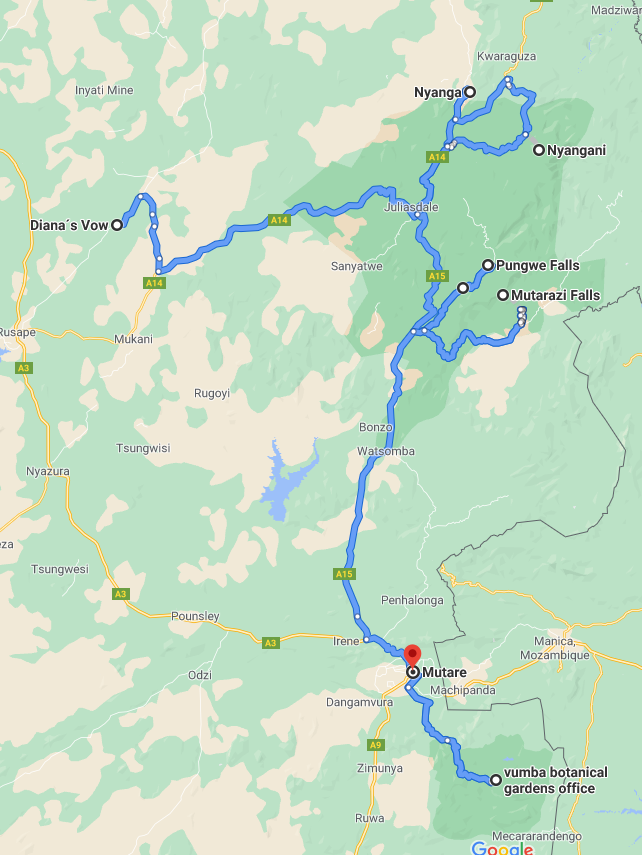
The first type of stone constructions are the pit structures, basically a hole in the ground, perhaps 2-3 meters deep and 5-10 meters wide, entered from the surface level through a sloping walkway, or sometimes a tunnel. According to the literature, these were cattle pits – but why would one go through so much effort, digging the hole, and an entrance tunnel, and lining the inside with a neat wall of rocks. In most other parts of the world a fence from trees and branches, or at most a low stone wall at surface level, would suffice. Beats me.
April 10th – the ruins
The area around Nyanga has gained some fame because of its ruins. Nothing like the Great Zimbabwe ruins, or the Khami ruins near Bulawayo, which I had seen two years earlier, but still, worthwhile a quick look. Apparently there are hundreds of different sites. And with the quick look comes the longer speculation, of what these were, and why.
Then there are these other ruins, presumably older than the pits. They are nothing more than one meter, to a maximum two meter, high walls – and I don’t think they have been higher in the past, otherwise you would find rubble around, but often more than a meter thick! I went to a place called Dzima, where hundreds of these walls can be found, circular, or parallel to each other, but never straight, always bended. And what for?

The last type of ruins are the so-called forts, believed to be strongholds against an attacking enemy. But that, too, doesn’t make sense. The Nyanga fort, the one I went to, is on a hill, but others are on a slope. The Nyanga fort covers a huge area, at different levels, and with multiple entrances, not exactly easy to defend. To me it is more likely to have been a village structure, growing in time with the addition of another compartment. But at least there is more to see here than at the other, earlier visited ruins: circular platforms, individual niches, door entrances, and the occasional monolith, an upright stone placed inside the circular structure. And furthermore, a lot of walls.

April 11th – to Mutare
Nyanga is also the place of the Nyanga National Park, and of Zimbabwe’s highest mountain, 2592 meter high Mount Inyangwani. Too much effort, and too little time, to climb on this trip, but attractive enough for a drive through the park, on my way to Mutare.
Not that long ago, during the earlier phases of the civil war in Mozambique, Mutare was ghost town, only a few kilometres from the border. But these days life has returned, and people like me can enjoy the fabulous scenery on the way. The hills, with an explosion of purple heather on the slopes. And the next moment you drive through a magnificent pine forest. I stop at the Pungwe Falls, where the water in the river of the same name drops some 200 m, before continuing in the a beautiful gorge, with steep, densely vegetated slopes. And a little further, at the Mutarezi Falls, with 792 meters higher than the Victoria Falls – but a lot smaller, of course, just a trickle in comparison.
Outside Mutare is the huge Vumba Botanical Garden, an interesting concept in a country like Zimbabwe, where natural beauty, including an explosion of wild flowers in season, doesn’t seem to justify the efforts to create landscaped gardens. I would think that the average black Zimbabwean couldn’t care less, and that this garden initiative is a largely white Zimbabwean idea. Luckily, there is also a lot of farmland in the surroundings, growing tobacco, coffee and bananas. Especially the tobacco sheds are impressive, including those of the Amsterdam Farm, owned by one Mr. Hildebrand. Would he be aware than one of the Dutch cigar brands popular in The Netherlands is called Hildebrand, as well?

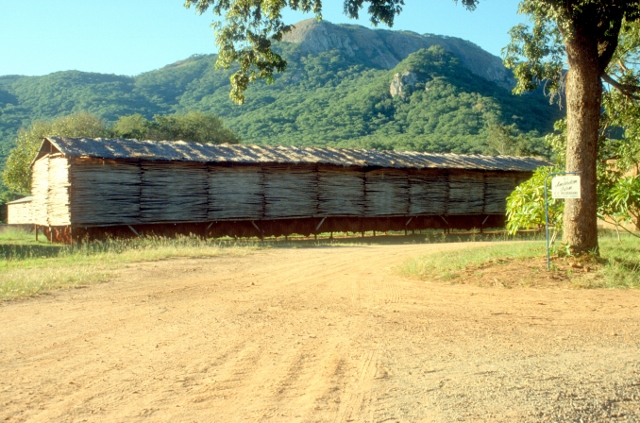
April 12th – back to Harare
In the afternoon I drove back to Harare, to the end of my one-and-a-half weeks in Zimbabwe. Completed my unfinished business; next stop Namibia.


